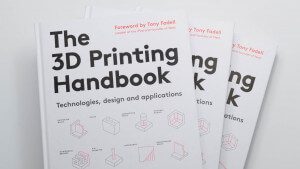You can tell some thought was put into the design of the The 3D Printing Handbook. The layout is targeted for engineers and techies, which means no wasted time trying to find what you need. It’s configured to be able to flip right to what you’re looking for, even giving key words in the margins to avoid having to scan the full text. Genius!
The 3D Printing Handbook is not only orientated to answer the how, as one would expect from a manual, but also the who, what, when, where and why. It does this with decision trees, real-life examples in industry, current brands and companies, clear images throughout the printing stages, simplified sketches, and more.
Furthermore, there is a nice balance of visual aids, mixing images of different stages of the 3D printing process and simplified sketches that show the basic mechanism.
The use of simplified sketches to show the basic mechanism is nicely balanced with real-life applications. It’s so important to have bona fide examples when working with a technology like this, because something in the design phase can be drastically different when transferred into a practical utilization. 3D Hubs addresses this disconnect by showing the limitations of the various technologies and tells you right off the bat which 3D printing technology is best for which application.
A highlight of this manual is that it takes a broad perspective in addition to the direct operation, answering any and all related questions that could arise. By doing so, it allows you to fully understand the process and technology. This complete understanding is crucial to be able to manipulate the technology’s capabilities and look beyond the traditional applications.
Website: LINK


